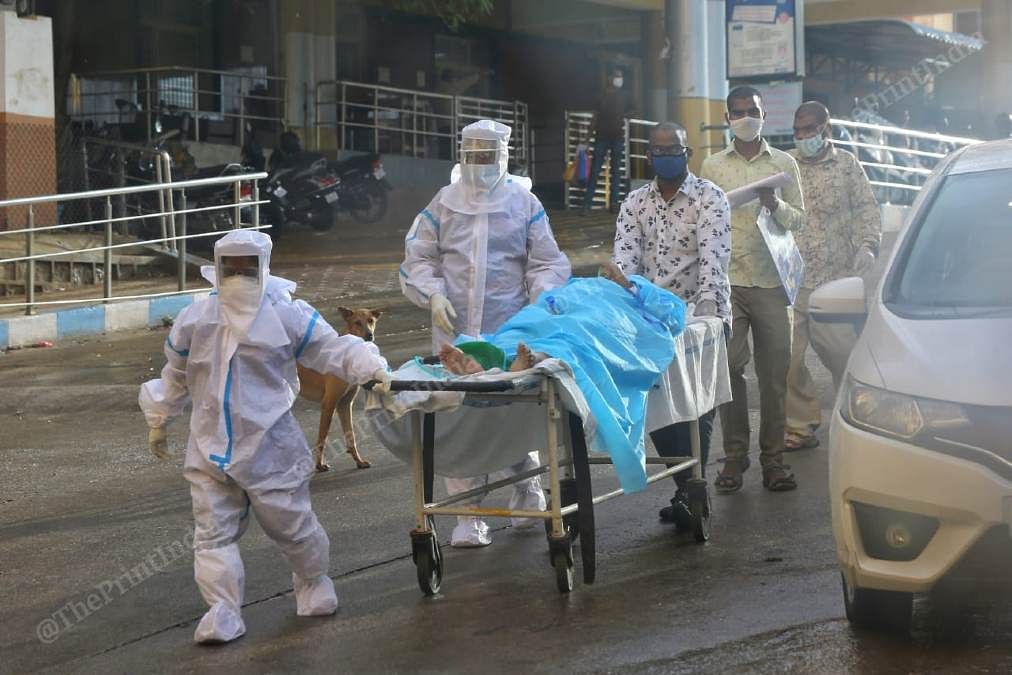New Delhi: Over five months after the first Covid-19 case was reported in India, a government analysis of deaths reported until 2 July shows that just a little less than half of them have happened in young people — those below 60 years of age. In 43 per cent of the deaths, there were no known comorbidities.
This flies in the face of repeated claims by the Narendra Modi government that most of the Covid patients who died had comorbidities.
The analysis has been done by the Integrated Disease Surveillance Programme, which functions under the Ministry of Health and Family Welfare (MoHFW), and is key to tracking all infectious diseases in the country.
While all the 17,834 deaths recorded until July were analysed, comorbidity and age group data was available only for 15,962 deaths as three states — Delhi, Uttar Pradesh and Maharashtra — have not been sharing data on comorbidities regularly, the IDSP said.
The last time official data about the mortality profiles was officially given out before this was on 21 May, at which time deaths in people with comorbidities stood at 73 per cent. The total cases at the point was at 1,12,359 lakh, and 3,435 deaths.
On Friday, the total number of cases in the country stood at 6,25,844, including 18,213 deaths.
Almost one in 3 deaths in 45-59 age group
According to the IDSP analysis, the age-wise breakup of deaths shows that 0.54 per cent deaths were in children aged less than 14 years, 2.64 per cent in people aged between 15-29, 10.82 per cent in people aged 30-44 years, 32.79 per cent in the 45-59 age group, 39.02 per cent in the 60-74 age group and 12.88 per cent in people aged over 75 years.
The break-up shows that while over half of the deaths are occurring among senior citizens — a group that has been repeatedly asked to stay at home even after the unlocking process began — there is a significant proportion of mortality in the 45-59 age group.
Almost one in every three Covid deaths in India is happening in this group — often regarded as the most productive years of an average person’s life.
Also read: Covid vaccine in India by 15 Aug? ICMR speeds trials as Modi govt eyes Independence Day target
Comorbidities
That Covid patients with existing health conditions (comorbidities) are more vulnerable than others has always been known. In the initial days of the outbreak, every time a death happened, the Government of India statement usually attributed it to a long list of comorbidities.
However, the latest IDSP analysis shows that comorbidities were found in 57 per cent Covid deceased until 2 July. For the others, it was this disease alone that was responsible for the death.
Among the comorbidities that make Covid patients high-risk are diabetes, hypertension, obesity, heart diseases, cancer and respiratory diseases.
In May this year, a study in the European Respiratory Journal that had looked at 1,590 Covid patients in China, had concluded: “Among laboratory confirmed cases of COVID-19, patients with any comorbidity yielded poorer clinical outcomes than those without. A greater number of comorbidities also correlated with poorer clinical outcomes.”
An analysis of New York deaths by statistics website Worldometer links 89 per cent deaths in that city to comorbidities.
Gender profile of deaths
The case fatality ratio in India on 2 July stood at 3 per cent. Case fatality ratio is the percentage of deaths from among all reported cases, as opposed to infection fatality ratio that takes into account undiagnosed cases at the population level too.
The analysis also shows that 68 per cent of all deaths in India were among male.
This is in line with global trends, although some Indian analyses have claimed that the case fatality ratio in Indian women is higher than the international experience. In a study in April, researchers from China reported in the Journal of Public Health that the risk of death in a male Covid patient is 2.4 times that of a woman.
This report has been updated to correct typographical errors in the graphics.
Also read: India to make Severe Acute Respiratory Infection and Influenza-Like Illnesses notifiable
